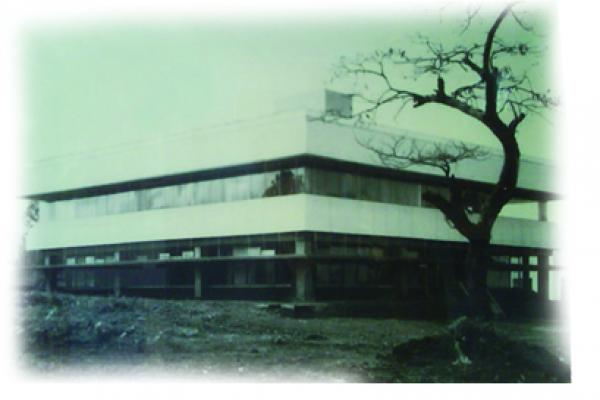Historical Review
On December the 1st in 1955, through a signed agreement between the Minister of Agriculture and Industries, the Technical Inter American Service of Agriculture Cooperation (STICA), and the University of Costa Rica, was founded the Agronomy Research’s Lab with the initial purpose of conducting agronomy research on crops such as coffee and cocoa, and to venture later on other fields.
It was assigned an executive committee to advise and coordinate the labors in technical aspects of the own objectives of the laboratory, including an adequate relation among the field research and the lab, and the accomplishment of research done by the students of the Agri-food School to their thesis and the extension as an informative complement of the results.
From December 1960 on, the laboratory became part of the School of Agronomy of the University of Costa Rica and it was eliminated its responsibility as a service lab. From 1972 on, activated the new regulation of the Agronomy School, it was changed the name of the unit to the Agronomy Research Center (CIA). Since 1922, CIA ascribed the Institute of Agricultural Research that depends hierarchically on the Agri-food School. Its objective is to contribute in the search of the integral development of the country.
Nowadays, the center depends on a scientific council that coordinates and trains specific technical aspects and involves adequately lab activities, greenhouse and field. This labor is made through the contest of technicians, students, and farmers both national and international. His area of substantive work is oriented to the research in four defined areas to know: 1) biotechnology of the plants; 2) postharvest technology; 3) soils (that include biochemistry, agricultural microbiology, fertility, soils, and tissue analysis; 4) natural sources. By its nature and inside the institutional task, it also makes a teaching and social labor.
Among some of the services that it provides, there are:
- To advice in the treatment or transformation of organic waste, natural and synthetic, with the purpose of finding an utility for the society and avoiding the contamination at the same time.
- To produce seed material of high quality.
- To obtain and multiply plants free of pathogens (mushrooms, bacteria, virus)
- To multiply fast and locally new crops or elite materials.
- To rescue embryos for obtaining new hybrids.
- To select tolerant plants to pests and illnesses of high production.
- To evaluate, through a physicochemical analyses, the current fertility status, and the potential of the soils in Costa Rica.
- To evaluate the status of mineral nutrition of the main crops in Costa Rica though plant absorption curves, and performance variables.
- To establish the methodology to tune the recommendations of the fertilization of the main crops in Costa Rica.
- Microbiologic analyses of soils, water and plants.
- Production of inoculants.
- Services of postharvest technology of fresh products in five areas: postharvest physiology, postharvest pathology, postharvest engineering, postharvest horticulture, and general training.
- To coordinate with international institutions the inclusion of geographic information generated over the country in regional programs.
- To train to undergraduate and graduate students in the usage of modern computational systems for managing geographic information.
In a period from 2 to 10 years the CIA researchers have produced a total of 129 articles in national magazines, 41 articles in international magazines. Moreover, they have participated in 449 national conferences or symposiums and in 78 international events. They also have participated in other activities such as meetings to coordinate activities, edit booklets, and elaborate chapter of books, etc. in 152 times.

